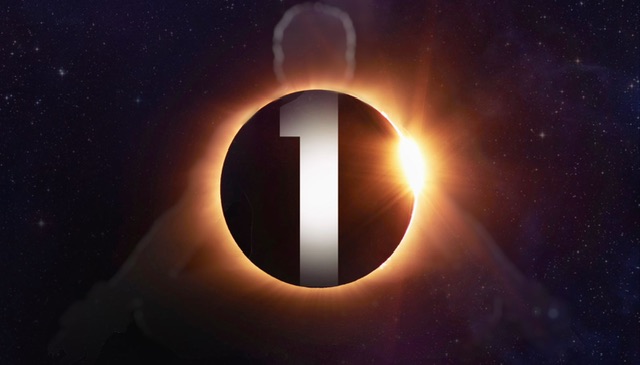The puranas narrate the episode having faced defeat for the asur army at the hands of devas, daitya guru Shukracharya approaches Lord Shiv to ask for the sanjeevani vidya which would make the asura army invincible. Indra, the king of devas, also goes to Kailash having gotten to know of intentions of Shukracharya, to ask for the same and reaches before Shukracharya. When Shukracharya reaches kailash, he finds Lord Shiv in Dhyan, and Indra sitting on an asan next him. With utmost humility, Shukracharya assumes a seat in the feet of the lord and with folded hands waits for him to open his eyes. When Lord Shiv opens his eyes, he first looks at Shukracharya and asks him the purpose of coming. Indra interjects that he had come first, and Lord smiles and says that his eyes fell on Shukracharya first and that while Indra has come as a king, Shukracharya had come as a yachak, and on both accounts deserved to be heard first.
Shukracharya discloses the purpose of his visit and Indra says that he too has come for the same. Lord Shiv tells them that only one of them can get the Sanjeevani vidya and to earn it they would have to perform the rigorous penance of suspending themselves upside down from a tree and living for a year on just the smoke of leaves. Shukracharya takes it as a command of the Lord while Indra, unwilling to undergo that pain and drunk on his recent victory, backs out thinking that there is no way Shukracharya can complete the task, and devas were too powerful to need to go through this to beat the asuras.
While Shukracharya immerses himself in terrible penance, in the court of Indra, his ministers are busy complimenting him on his laurels and how asurs do not stand a chance in front of deva army. At that time, Narada muni comes to the devasabha, and tells Indra that a king is always happy if a conversation starts with his compliments and ends with his enemy’s condemnation. Narad muni warns Indra that Guru Shukracharya is succeeding in his challenge and will surely achieve the Sanjeevani Mantra, which can lead to the destruction of Devlok.
Indra, in the fear of losing his throne, orders for disruption of the tapasya of Shukracharya. He sends his daughter to the tapasthal, who puts chillies in the burning leaves whose smoke the daityaguru was inhaling causing terrible pain to him. Shukracharya however continues his tapasya without worrying about his life, with single focus on achieving the mantra. Lord Shiv senses the pain of Shukracharya and appears before him, ending his pain and granting him the mantra long before the completion of the year, pleased by his devotion and single pointed focus.
A battle ensues between the devas and asuras, and devas led by Indra are defeated badly. It was the ego and arrogance of Indra which brought his fall and his attachment to his throne, which led to him making further mistakes. He was given the first warning by Lord Shiv the day he visited Kailash, when the Lord chose to hear Shukracharya over him, but Indra, drunk in pride and power, did not heed it. He became complacent and when he saw his power going, in the fear of losing what was most dear to him, he made the same mistake – instead of working to strengthen his army by hard work and penance, he chose to disturb a devotee immersed in penance of Lord himself thinking he is the king of devas, and so is not bound by the law of karma. What was lacking in the case of Indra was ‘swadhyay’.
Swadhyaya is self introspection, an extremely important practice in the journey of a sadhak. It is reflecting upon one’s mistakes and also, correcting them. Everyone knows what mistake they have made, it is just that very few make effort to correct it. Most convince themselves that is ok, or that what’s done is done, lets forget it and move ahead. But Creation doesn’t work like that. It is ok to make a mistake but if you do not correct the mistake, you cannot move forward on the journey of the spirit.
What is a mistake? A mistake is simply a blockage inside you, that materializes as an error in the physical realm. What you are inside is reflected outside. If there is no blockage, there is no question of a mistake. And if there is a blockage, there is no moving further, till the blockage is removed. Hence swadhyayaassumes a central role in this journey.
The blockages can be at various levels. First are blocks of the moolsthan, where a person errs – cheats / deceives because of want for physical gains. Next are the blocks of swadishthan, these are an outcome of one’s sexual drive. Next is the manipoorak – the person makes a mistake in the struggle for power. Then come the blocks of surya chakra – the most dangerous – here a person errs because of ego or arrogance. Next blocks pertain to the anahad chakra – the centre for love, there is nothing wrong in loving someone, but then when you make a mistake because of that, it indicates a block at the level of anahad. Then there are the blocks of visshuddhi, here errors are made in the creative strife.
That distinguishes a sadhak from an ordinary person is that the sadhak realizes the mistake, corrects it and moves ahead. When you correct a mistake, that block is removed, and there is no question of making it again.





